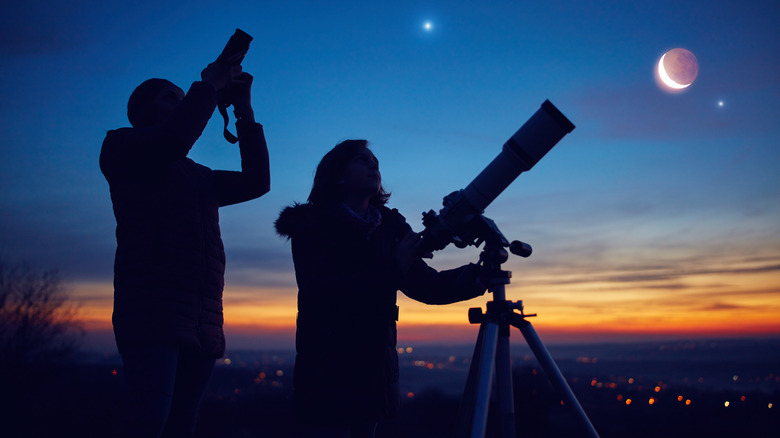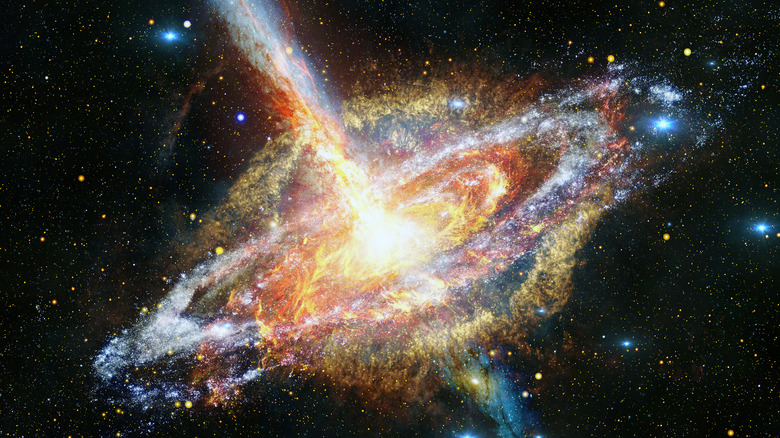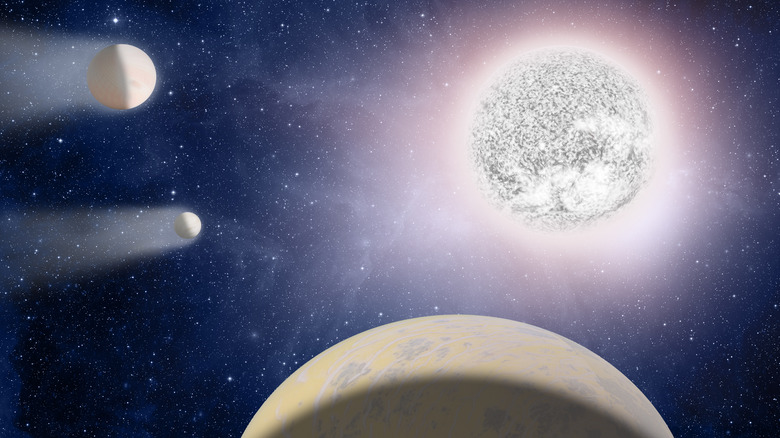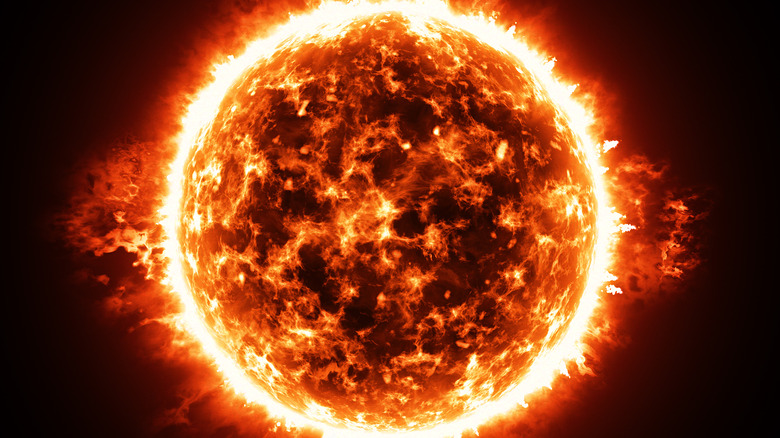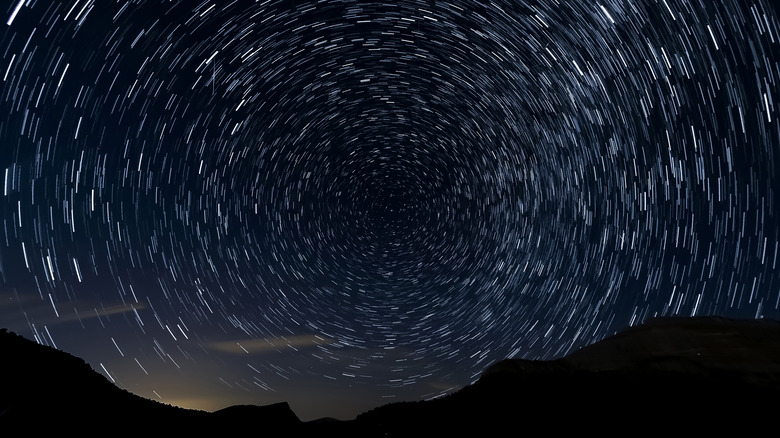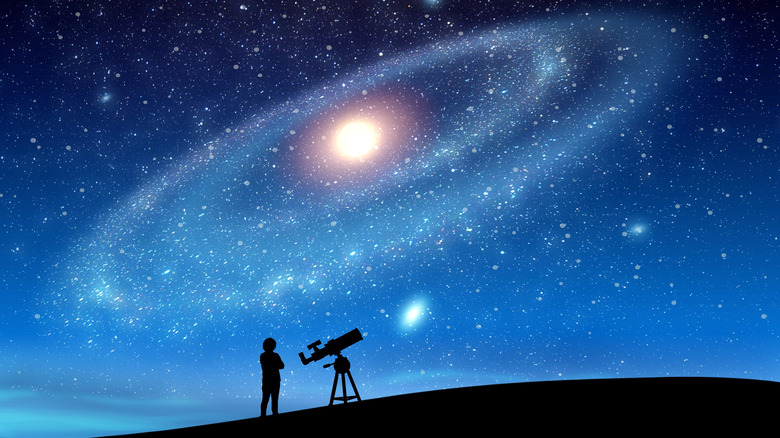This Is The Oldest Planet In The Milky Way Galaxy
In July 2022, humans on Earth got one of the best looks at outer space that we've ever seen before — NASA published a photo from the James Webb telescope to show the colossal scale of the Milky Way galaxy. Scientists have been seeking to learn all they can about the galaxy for hundreds of years. That's why the discovery of the oldest planet in the Milky Way in July 2003, 19 years ago, was so special (per the Australian Broadcasting Corporation).
This planet is at least twice as big as Jupiter, or the size of about 800 planet Earths put together, per SF Gate. Consisting mostly of gas, the planet is incredibly old. According to HubbleSite, it can be found at the heart of a very old globular star cluster called M4, a whopping 5,600 light-years from Earth. For scale, one light-year is about 6 trillion miles, so this planet is extremely far from our home planet (via NASA Space Place).
The Methuselah planet
Google Arts & Culture reports that the planet also has a few nicknames: "Methuselah" and "the Genesis planet." It was given the name Methuselah after a character in the Bible who lives almost 1,000 years to become the oldest man on the planet, according to Britannica. The name is a good fit: Universe Today reports that Methuselah is about three times older than our own Sun, which is only 4.6 billion years old.
July 2003 wasn't actually the first sighting of this ancient planet. Researchers first discovered the M4 star cluster in 1988 (via HubbleSite). They spotted a pulsar, which is like a bright light that spins incredibly fast and emits radio waves. It drew the scientists to the pulsar like a beacon, and using high-powered telescopes scientists could see two shapes rotating around it.
Then, in the 1990s, scientists spotted a third object in the rotation, but no one could say with certainty what that was.
The first circumbinary planet
What they were seeing in the Scorpius constellation was PSR B1620-26 b, later nicknamed Methuselah, per Space.com. It rotated around the glowing pulsar and a white dwarf star in a circumbinary orbit — a phenomenon that is exceedingly rare, according to The SAO/NASA Astrophysics Data System. Astrophysicists had never before found a circumbinary planet (or one that rotated around two different objects).
Space.com reports that Methuselah could never support life. It's constantly exposed to the bright and highly radioactive light from the pulsar it orbits. The planet is hit with radioactive beams from the pulsar about 100 times per second on average, so it isn't the kind of planet that most life forms could thrive on (per HubbleSite). Even if humans could somehow survive the pulsar's beams, we're still out of luck because Methuselah doesn't even have solid ground. Instead, it is mainly comprised of gases.
The 13 billion-year-old gas giant
The planet has been through a lot in its 13 billion years of existence. In fact, it's so old that when the planet was born, oxygen didn't even exist in the universe yet (via HubbleSite). When it was born, Methuselah most likely circled around a big warm sun, much like how Earth revolves around its sun. For at least 10 billion years, Methuselah remained 250 million to 750 million miles away from its sun. As it orbited, it periodically encountered harsh shock waves. Methuselah was also sometimes subjected to high doses of radiation.
Over billions of years, the star that Methuselah orbited turned into a red giant. The star died, but Methuselah lived on. It got sucked into another orbit along with its original well-traveled path and began to orbit a neutron star. Groups of astrophysicists worked for years to determine what lay in the M4 star cluster. Since their study subjects are so many trillions of miles away, some creative computations were in order, per the Chicago Tribune. No one has ever actually seen Methuselah, but scientists know it is there when it blocks the pulsar's light.
First generation of planets
Once discovered, Methuselah took what scientists knew about the universe and turned it on its head, according to SF Gate. The gas planet is so old that researchers think it is among the "first generation" of planets ever created (our sun and planets are the third generation). No one knew that stars as old as the ones in the M4 cluster could actually have planets. When Methuselah was "born," it had to be a gas planet instead of a solid planet because the types of chemicals needed to make it solid just didn't exist in the universe yet.
Part of what makes Methuselah so special is that it was in existence for far longer than astrophysicists ever thought possible. Per the Chicago Tribune, researchers knew there were stars in the M4 cluster, but they never dreamed that there were the proper chemicals to create real planets, too.
A year on Methuselah lasts 95 Earth years
Methuselah taught space researchers that planets formed within 1 billion years of the Big Bang (which was about 13.8 billion years ago, per the American Museum of Natural History), which was a revolutionary concept at the time. While our Earth takes just 365 days to orbit the sun, if you lived on Methuselah, you might rotate its sun just once and have a single birthday, if you're lucky (via NASA). One year, or one orbit of its star, on Methuselah takes 95 years. Methuselah has a lengthy orbit of 23 astronomical units (AU), with each unit equalling about 92.9 million miles, according to World Wide Converter. Methuselah's long orbit around the universe covers roughly 2.1 billion miles.
SF Gate reports that NASA held a press conference to announce their findings to the world in 2003. It shattered previously held scientific theories about how early planets could have formed after the Big Bang and gave astrophysicists their first glimpse at the oldest known planet in our galaxy.
